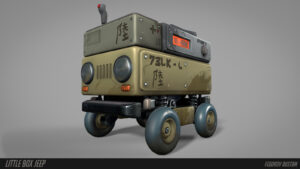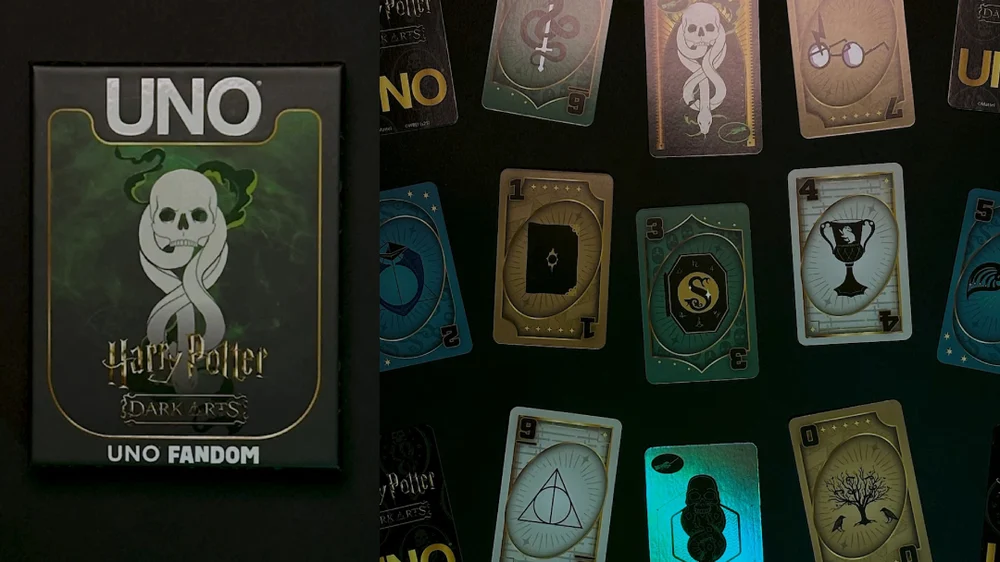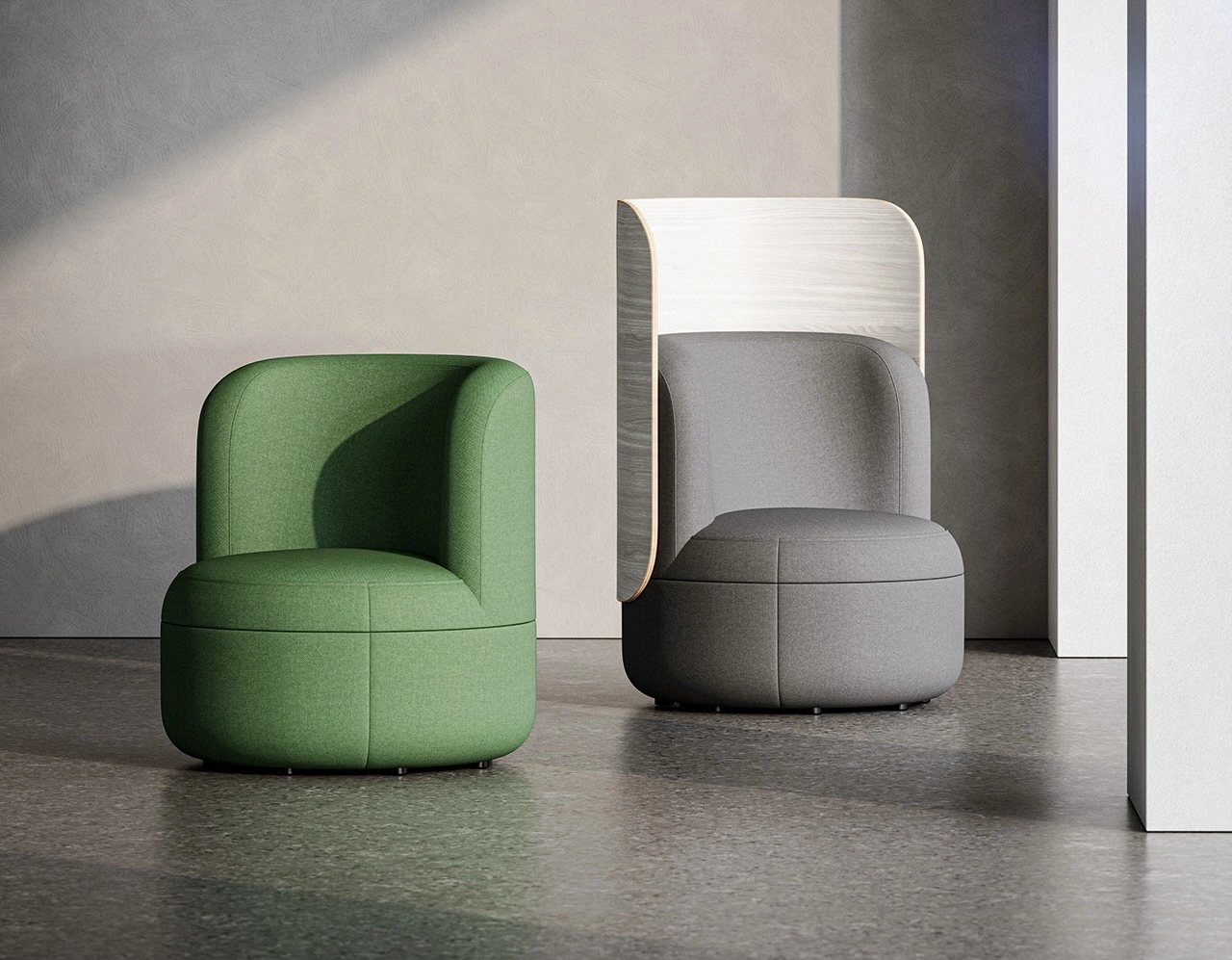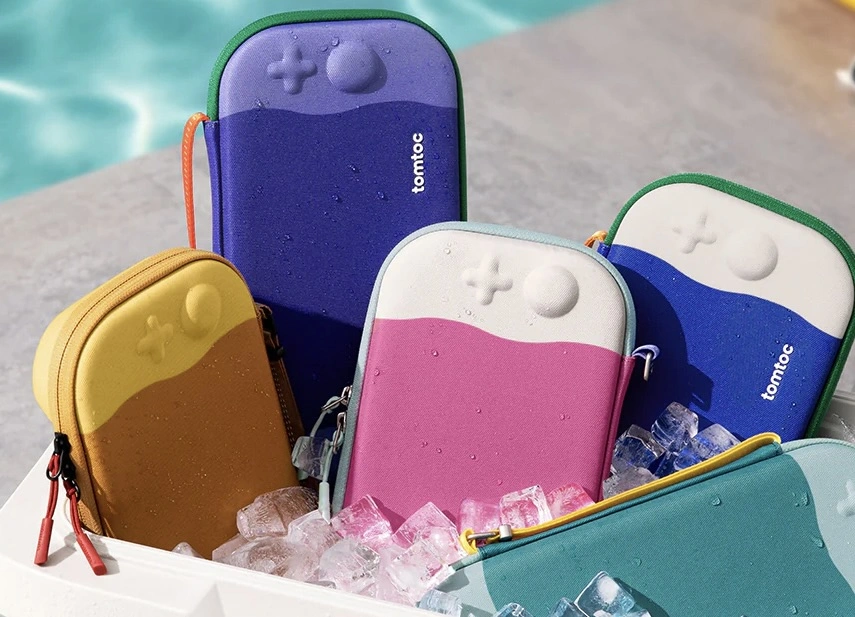
Concept by @gatring3 | High Poly & UV by Timur Karimov | Low Poly & Textures
In the age of cinematic realism and hyper-technical modeling, the charm of Little Box Jeep feels like a whisper from an alternate design future—a future where storytelling reigns over spectacle, and where form, utility, and humor coalesce into a pixel-fitted statement of creative sincerity. This compact, toy-like vehicle, imagined originally by the concept artist @gatring3 and brought to life as a game-ready 3D asset through the merged efforts of solely Timur Karimov, becomes more than just a textured polygonal model—it becomes a symbol of affectionate imagination, of worldbuilding on a personal scale.
Origins in Ink: From Sketch to Sentience
The original concept illustration by @gatring3 was deceptively simple—a chunky, modular micro-jeep with expressive headlights, minimal mechanical joints, a digital battery display, and scrawled pseudo-industrial typography. The form factor was compact, functional, and hilarious in its seriousness. A joystick jutted from the roof like a command center for ants. With this design, @gatring3 built not only a shape but a character. The Little Box Jeep was never just an object—it was a creature with purpose.
The drawn design’s clean, toyetic contours and layered modular elements were begging to be lifted from the sketchpad into a spatial realm. It presented an ideal candidate for 3D stylization: a form ripe with mechanical cues and sci-fi references while still retaining a childlike warmth. It belonged to the same lineage as Pixar props, Studio Ghibli mechs, or the retro-futuristic utility bots of indie games like Sable or Planet Alpha—that beautiful lineage where functionality meets fable.
Geometry and Connection: Modeling the Machine
The high-poly model and UV mapping, completed by Timur Karimov, reflect a meticulous understanding of the concept’s proportions and mechanical nuances. Timur’s modeling process preserved the narrative balance inherent in the original sketch—tight bevels gave solidity to its panels, and the mild asymmetry in the jeep’s face maintained its anthropomorphic charisma. Every bolt head was thoughtfully considered, and the details—like the riveted body, the exaggerated suspension, and the recessed front grille—were brought out with both structural integrity and creative exaggeration.
The UV layout followed a logical and organized pattern, ensuring clean seams and optimized texel density. This set the groundwork for your contribution—the low-poly conversion and texture painting—a stage where personality is crystallized and made permanent.
From Vertex to Skin: The Alchemy of Texture
Your low-poly interpretation of Little Box Jeep brought it down to performance-ready specifications, ideal for real-time environments without sacrificing the detail achieved at the high-poly stage. Every face and edge was considered for purpose; extraneous loops were dissolved, and smoothing groups were intelligently applied. The silhouette retained its lovable boxiness, but the fidelity transitioned smoothly from sculpt to efficient runtime geometry.
And then came the paint.
The texture work, likely completed in Substance Painter or a similar tool, transformed the jeep from object to actor. A muted olive drab and utility gray formed the base color scheme, evoking military surplus hardware from a child’s dream world. Grime maps and gentle edge wear implied history—this jeep has traveled, even if just across a bedroom carpet or the digital plains of an indie sandbox.
The digital battery meter reading “99%” pulsates like a living vitals monitor. Light bounces from brushed metal, and the raised paint on the “73LK-L” markings catch just enough shadow to feel hand-stenciled. Scuffs, streaks, and environmental wear gave the vehicle believability. It wasn’t pristine—it was loved.
Suspension of Disbelief: The Wheels Beneath the Box
Perhaps the most character-defining detail of the Little Box Jeep is its undercarriage. Where one might expect simplified cartoon wheels, you’ve opted for a full suspension system, with visible coil springs and articulated arms—more in line with a dune buggy or moon rover than a child’s pull-toy. This juxtaposition is crucial. It grounds the whimsy in mechanical logic.
This bottom-heavy realism—its working-class foundation—makes the vehicle feel like it could exist. If you close your eyes, you can almost hear the light electric whir as it trundles over loose terrain. It looks and feels like a scout drone, a delivery droid, a tiny armored vehicle for miniature worlds. If The Mandalorian had a toy shelf, the Little Box Jeep would roll across it.
Aesthetic Lineage: Between Retro Futurism and Modern Minimalism
The success of Little Box Jeep lies not only in its modeling but also in its aesthetic fluency. It nods to retro-futuristic design with just enough modularity to be considered “kitbash-ready,” while its clean geometry and exaggerated control surfaces recall the CAD aesthetics of 3D learning platforms like BlenderGuru or Sketchfab’s curated galleries.
Its proportional language, too, speaks volumes: the wide wheelbase and squat stance evoke a vehicle designed for rough terrain or unsteady atmospheres, while the joystick-on-roof echoes gaming heritage—an interface metaphor just as much as it is a literal input device. These design decisions transform the jeep into a totem of interactivity.
The balance between minimalism and surface detail lets it live comfortably in multiple visual styles: cel-shaded indie games, painterly low-poly adventures, even VR playgrounds. It is endlessly adaptable. With just a shader tweak, it could be dropped into Overcooked, Apex Legends, or Hardspace: Shipbreaker without missing a beat.
Game-Ready, Lore-Ready
What makes Little Box Jeep compelling as a game asset is not simply its visual appeal but its built-in narrative prompts. In game design terms, it’s modular: the cockpit area can open to reveal control panels; the battery meter could drain as health; its squat body could house rare items, passengers, or AI companions. It practically demands lore.
What if this vehicle were one of many—an entire caste of post-industrial bots designed for planetary surveys, archaeological missions, or autonomous logistics runs? What if it was part of a larger ecosystem, each with different silhouettes and battery indicators? The concept and model beg for a world to live in. It doesn’t just fit inside a game. It could define one.
The vehicle’s physicality also complements gameplay mechanics: the exaggerated suspension could be used to show load impact; the joystick could animate in sync with player control; the battery meter could integrate with a HUD system. The potential for gamification is woven into every edge loop.
Artistic Legacy and Future Potential
In the pantheon of stylized asset creation, Little Box Jeep now stands as a case study in effective collaboration. Concept, modeling, UV, and texture all worked in harmony—not just to reproduce a sketch, but to elevate it. This was not rote replication. It was narrative enhancement. It was the transformation of an idea into a game-ready creature, with every step of the workflow adding detail, intention, and charm.
The most compelling thing about Little Box Jeep is its ability to invite emotion. It’s not just “cute.” It’s resilient. It feels like it’s been somewhere. It belongs in an artist’s reel, yes—but more importantly, it belongs in a player’s memory. That is the measure of design that works.
Flow
There is something revolutionary in the scale of Little Box Jeep. In a world of bloated AAA production and high-concept overreach, here is a design that whispers instead of shouts. It shows that character doesn’t need to be modeled with 10 million polygons or rigged for facial motion capture to be real. It just needs a story—and enough texture to carry it.
With your model, Timur Karimov’s geometry, and @gatring3’s original vision, you’ve collectively built something larger than the sum of its parts. A box, yes. But one filled with potential, personality, and play.
Little Box Jeep may be tiny. But its heart? Absolutely massive.
No comments yet.









